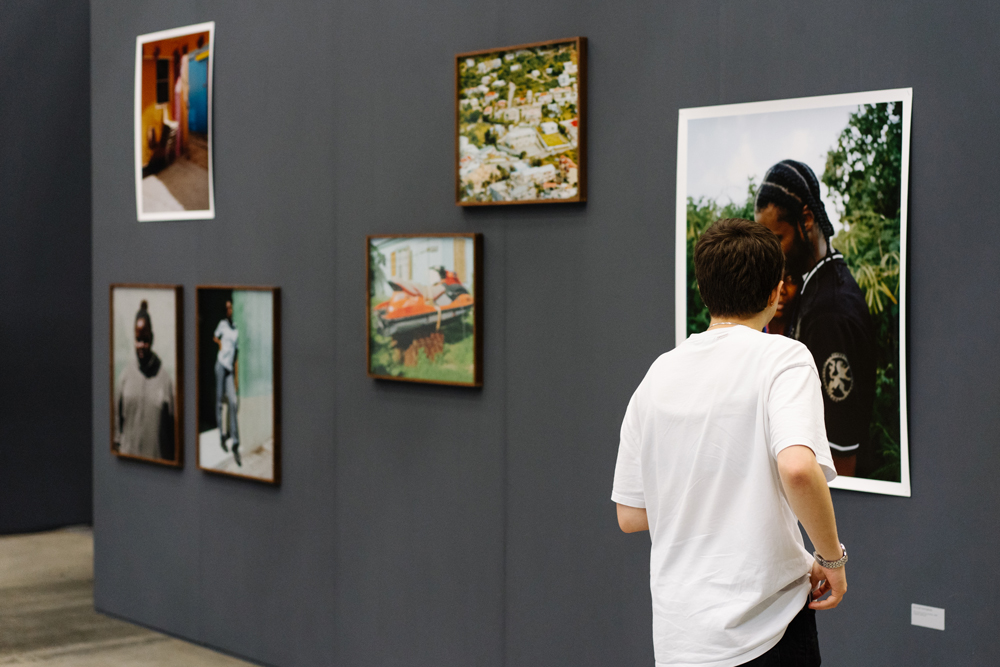
Coming soon
Coming soon
Selecteer type

This year marks the tenth edition of Prospects, the recurring exhibition of the Mondriaan Fonds at Art Rotterdam. Each year, visitors get to explore work by artists who have recently received a contribution from the Fund, that they can use for the start of their professional practice. New this year is the extension of Prospects to the Expedition Building, directly opposite the Van Nellefabriek. The extension effectively doubles the amount of exhibition space in square meters. This year, visitors can immerse themselves into the work of 88 visual artists.
Their work is curated by Johan Gustavsson, who returns for the third time, in collaboration with Gabija Seiliute. Gustavsson is the co-director and curator at Project Space 1646 in The Hague, co-founder of The Hague Contemporary and he’s also active as a lecturer at the Royal Academy of Art in The Hague. Seiliute works as a creative freelancer, after finishing her studies in Art History and Curatorial Studies. In this interview, we ask them a bit more about this year’s edition of Prospects.

What does it take to curate an exhibition like this? What elements come into play?
GS: “Because the artists have already been selected, we are here to take care of the process, to guide them gently and to make sure that all of the requirements are met. It’s not like curating in the traditional sense, we have a coordinating role, in which we need to think in terms of the space, the budget and logistical restraints.”
JG: “In the end, our job is to make the artists look as good as possible and to make it a pleasurable event for visitors as well. The Prospects exhibition compares to the size of a biennial, and people generally take a few days to see that. So that is something we talk about with the artists, which artwork would be most suitable for an experience like that. We want them to consider the attention span of our visitors and their ability to absorb it all. But it’s always very much a conversation between us and the artists, who are often young and ambitious. It demands a bit of flexibility on our end. From a curatorial point of view, it’s about portioning out the works over two locations. The distribution hall in the Van Nellefabriek can be quite overwhelming. In collaboration with Mika Radescu from Tom Postma Design, we optimise the visitor journey, to make it more manageable. Some of the proposals were quite unexpected, for instance really large pieces. Then you have to consider how you can use the space in such a way that those works look their best. That is where we really rely on the buildup team. The main thing is to show much talent there is in the Netherlands at the moment. So you come up with creative solutions to make certain ideas work, within the budget and the challenges that a world heritage building can pose.”
GS: “We work in close collaboration with the artists and I rely on Johan’s experience and the entire production team. Because it really is a big production. I’m learning so much and I’m seeing a lot of art, soaking everything in. Of course, COVID made sure that things run a bit differently, but because this is the second year, we knew how to approach it.”
Have you been able to detect certain art world trends? The pandemic, metoo, the zoomification of our society and the climate must be recurring topics, as these themes are vital topics on our agenda, but is there anything else that stands out?
JG: “With 88 artists, the offer is extremely varied. What struck me was the production value. For instance, there will be quite a lot of video works on show during this edition, and they have fantastic production value. Of course, that is related to the accessibility of good cameras and other resources, which would have been much harder to get by a few years back. That is why Gaby and I decided to create a cinema, a special environment with a big screen and good sound, to honour that level of production. In total, there will be five works on show in the cinema.”
GS: “I noted many types of craft in the art works, things that were made with such precision. Of course, that may also be related to the increased accessibility of materials and machines.”
What is the role of the Mondrian Fund in the career of young artists? What does a starter’s contribution mean for these artists and how can it help them to get their career off the ground?
JG: “It’s quite unique, this type of support. To have this amount of support for fairly young artists, as far as I know, it doesn’t really exist anywhere else. The artists receive economical support, which is particularly crucial during the pandemic. That way, they can invest in their practice, both in time and materials. But it’s also incredibly valuable for them in terms of visibility: to show their work during Art Rotterdam. It’s almost functions like a quality mark.”
GS: “It’s also an opportunity to be noticed by the press, as well as a relevant network. Some artists are even able to sell work.”
JG: “Yes, some of these results are quite direct, like AkzoNobel buying work, or arts collectors in general. It’s also a time in which meaningful connections are forged between artists and galleries. Many curators will put artists on their list, perhaps for an exhibition years later. I’ve run 1646 for many years now and I’ve always gone to see the Prospects exhibitions during Art Rotterdam to see new art, I’m always scouting new talent that I didn’t know yet. But I may follow them for ten years before I work with them. So showing your work at Prospects can have long term effects as well. Some of the artists on show already have quite a career, the general level is really high and the extra space this year makes us, both the artists and ourselves, extra ambitious.”
The exhibition Prospects will be on show during Art Rotterdam, from 19 to 22 May 2022, in the Van Nellefabriek and across the street in the Expedition Building.
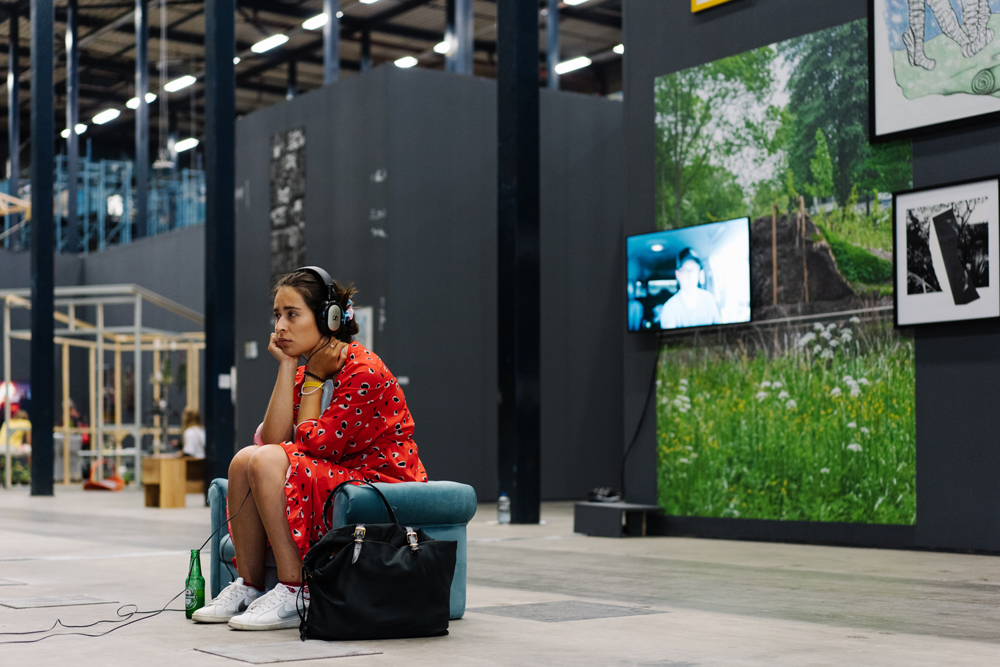

Dit jaar vindt alweer de tiende editie van Prospects plaats, de terugkerende tentoonstelling van het Mondriaan Fonds op Art Rotterdam. Bezoekers kunnen hier ieder jaar werk ontdekken van kunstenaars die recentelijk een bijdrage van het Fonds hebben ontvangen voor de start van hun beroepspraktijk. Nieuw dit jaar is de uitbreiding van Prospects naar het Expeditiegebouw, direct tegenover de Van Nellefabriek. De uitbreiding betekent een verdubbeling van het aantal vierkante meters. Dit jaar kunnen bezoekers zich onderdompelen in het werk van maar liefst 88 beeldend kunstenaars.
Het werk van deze kunstenaars wordt gecureerd door Johan Gustavsson, die dit jaar voor de derde keer terugkeert als curator. Hij wordt hierin bijgestaan door Gabija Seiliute. Gustavsson is mededirecteur en curator van Project Space 1646 in Den Haag, mede-oprichter van The Hague Contemporary en hij is ook werkzaam als docent aan de Koninklijke Academie van Beeldende Kunsten in Den Haag. Seiliute werkt als creatieve freelancer en rondde eerder een studie in Kunstgeschiedenis en Curatorial Studies af. In dit interview vragen we het duo meer over de aankomende editie van Prospects.

Wat komt er allemaal kijken bij de organisatie van de groepstentoonstelling Prospects?
GS: “Omdat de selectie aan kunstenaars vooraf al vaststaat richten wij ons met name op het proces. We begeleiden de kunstenaars en zorgen ervoor dat aan alle randvoorwaarden wordt voldaan. Het is daarom eigenlijk niet te vergelijken met cureren in traditionele zin, we hebben echt een coördinerende rol, waarbij we moeten denken in termen van ruimte, budget en logistieke beperkingen.”
JG: “Uiteindelijk is het onze taak om ervoor te zorgen dat de kunstenaars zo goed mogelijk uit de verf komen en dat de tentoonstelling ook voor de bezoekers een fijne ervaring biedt. Prospects is qua grootte vergelijkbaar met een biënnale, en daar reserveren mensen over het algemeen vaak een paar dagen voor. Dat is iets waar we vooraf met de kunstenaars over praten, welk kunstwerk leent zich het beste voor zo’n ervaring? We willen dat ze rekening houden met de aandachtsspanne van onze bezoekers en hun vermogen om alles te absorberen. Maar het is altijd een wederzijds gesprek tussen ons en de kunstenaars, die vaak jong en ambitieus zijn. Het vraagt soms wat flexibiliteit van onze kant. Als curatoren ben je ook bezig met het verdelen van de werken over de twee locaties. De distributiehal in de Van Nellefabriek kan best overweldigend zijn. In samenwerking met Mika Radescu van Tom Postma Design optimaliseren we de bezoekersreis, om deze overzichtelijker te maken. Sommige voorstellen waren bijvoorbeeld best onverwacht, denk aan hele grote werken. Dan moet je vooraf bedenken hoe je de ruimte zo kunt gebruiken dat die werken goed tot hun recht komen. Daarin vertrouwen we ook echt op het opbouwteam. Het belangrijkste is om te laten zien hoeveel talent er op dit moment werkzaam is in Nederland. Uiteindelijk kom je met creatieve oplossingen om bepaalde ideeën tot uitvoering te kunnen brengen, rekening houdend met het budget en de uitdagingen die een beschermd werelderfgoedgebouw met zich mee kan brengen.”
GS: “We werken nauw samen met de kunstenaars en ik leun daarbij op de ervaring van Johan en het productieteam. Want het is echt een grote productie. Ik leer zoveel en ik zie waanzinnig veel kunst, ik neem het allemaal in me op. Uiteraard zorgde COVID ervoor dat sommige zaken een beetje anders liepen, maar omdat dit alweer het tweede jaar is wisten we beter hoe we daarmee om moesten gaan.”
Hebben jullie in het aanbod nog bepaalde trends gespot? De pandemie, metoo, het klimaat en de Zoomificatie van ons leven zullen ongetwijfeld dankbare onderwerpen zijn — want uitermate relevant voor ons allemaal — maar is er daarnaast nog iets dat jullie in het bijzonder opvalt?
JG: “Met 88 kunstenaars is het aanbod enorm gevarieerd. Wat me vooral opviel was de hoge productiewaarde. Zo zullen er tijdens deze editie behoorlijk wat videowerken te zien zijn en die hebben een fantastische productiewaarde. Dat heeft natuurlijk te maken met de grotere toegankelijkheid van goede camera’s en andere apparatuur, dingen die een paar jaar geleden veel moeilijker te verkrijgen zouden zijn geweest. Daarom hebben Gaby en ik besloten om een bioscoop te creëren, een speciale omgeving met een groot scherm en goed geluid, om dat productieniveau te eren. In totaal zullen er vijf werken te zien zijn in deze bioscoop.”
GS: “Onder de kunstwerken zag ik ook veel soorten ambacht, dingen die met zo’n precisie zijn gemaakt. Dat kan natuurlijk ook te maken hebben met de toegenomen toegankelijkheid van materialen en machines.”
Wat is de rol van het Mondriaan Fonds binnen de loopbaan van jonge kunstenaars? Wat betekent een startersbijdrage voor deze kunstenaars en hoe kan het hen helpen om hun carrière van de grond te krijgen?
JG: “Deze vorm van ondersteuning is behoorlijk uniek. Voor zover ik weet bestaat deze mate van steun voor jonge kunstenaars nergens anders. De kunstenaars krijgen steun in economische zin, wat zeker tijdens deze pandemie van groot belang is. Op die manier kunnen ze investeren in hun praktijk, zowel in termen van tijd als materiaal. Maar ook qua zichtbaarheid is het voor hen ontzettend waardevol: het feit dat hun werk te zien is tijdens Art Rotterdam. Dat fungeert bijna als een keurmerk.”
GS: “Het biedt bovendien een kans om opgemerkt te worden door de pers en een relevant netwerk. Sommige kunstenaars kunnen zelfs werk verkopen.”
JG: “Ja, sommige van deze resultaten zijn direct meetbaar, zoals de aankoop van werk door AkzoNobel of kunstverzamelaars in het algemeen. Het is ook een tijd waarin kunstenaars en galerieën betekenisvolle relaties aangaan. Veel curatoren zetten de namen van kunstenaars op hun lijst, wellicht voor een project in de toekomst. Ik run 1646 nu al vele jaren en in die hoedanigheid bezocht ik altijd de Prospects-tentoonstellingen tijdens Art Rotterdam. Ik ben voortdurend op zoek naar nieuw talent dat ik nog niet kende. Maar soms volg ik bepaalde kunstenaars wel tien jaar voordat het tot een samenwerking komt. Het tonen van je werk in Prospects kan dus ook op de lange termijn effecten hebben. Sommige deelnemende kunstenaars hebben overigens al een behoorlijke carrière. Het algemene niveau dit jaar is erg hoog en de extra ruimte maakt ons, én de kunstenaars, extra ambitieus.”
De tentoonstelling Prospects zal tijdens Art Rotterdam (van 19 t/m 22 mei 2022) te zien zijn in de Van Nellefabriek en aan de overkant, in het Expeditiegebouw.

During Art Rotterdam, you can spot the work of hundreds of artists from all over the world. In this series we highlight a number of artists who will show remarkable work during the fair.
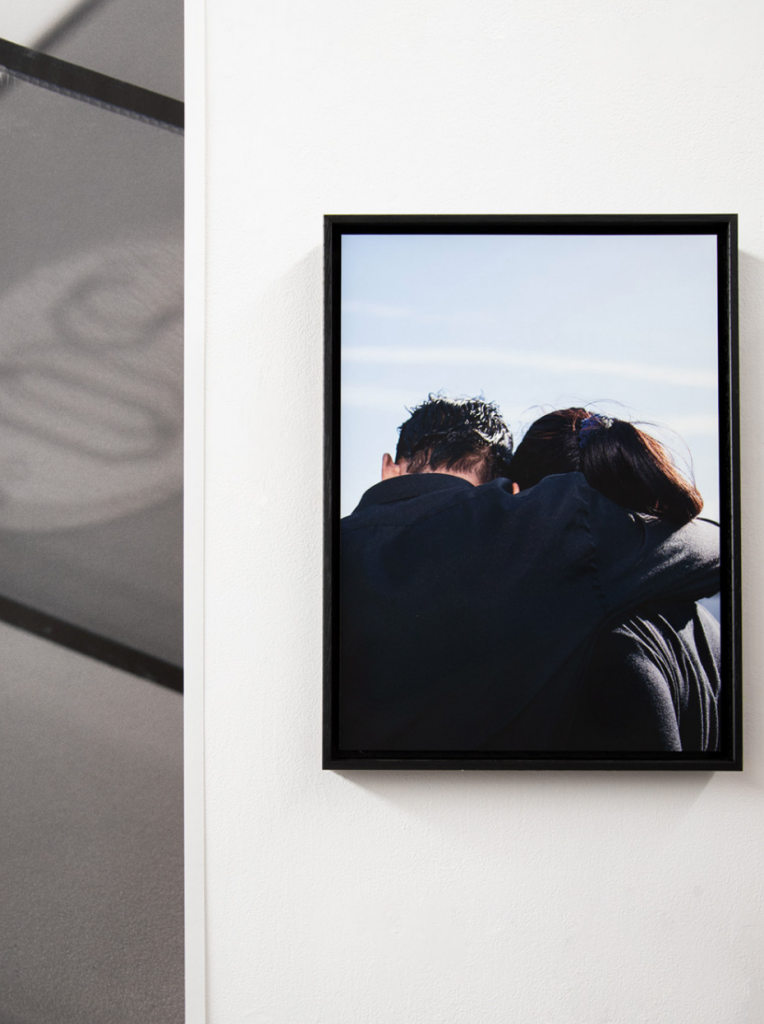
From a young age, the Polish-Dutch photographer Wiosna van Bon was extremely interested in how other people live. When she was six years old, she regularly walked to school alone, because her mother worked in nursery homes and her father usually worked several jobs at the same time. She would leave the house fifteen minutes earlier and then ring the doorbell at random houses on the way, asking if she could come in for a while. After a few months, these astonished neighbours would ring the doorbell at the six-year-old’s house; they appreciated the social calls, but perhaps not at a quarter to eight in the morning. It is a telling sign for the photographer’s curiosity, a curiosity that is strongly reflected in her work. During the same period, she also got her first analog camera, stimulated by her mother, who had a creative background and had completed a university degree in Poland. Van Bon’s father died at a young age, when the photographer was just twelve years old. It’s perhaps not surprising, then, that she has such a deep-rooted interest in the ways in which different family units function.
Van Bon studied documentary photography at the Royal Academy of Art in The Hague, but always retained an interested in psychology. She enjoys reading books by the British neurologist Oliver Sacks for instance, whose works offer a glimpse into the human mind. Van Bon actually does the same thing: she seeks out a niche social group and then tries to interpret them, to really understand them. When she accompanied her mother to the care facility where she worked, the photographer was fascinated by subtle differences. She noted how in some of the older homes, there was usually much more room for the individuality of the residents.
Later, she photographed people who claim to be hypersensitive to electromagnetic radiation, the predecessors of the people who are now firmly convinced of the possible damage of 5G. It’s always based on a genuine interest in their experience and combined with extensive research. For this project, she also entered into discussions with various experts, organisations and the people in question. She often spends months working on a project, which gives her a really good picture of the lives of these people. Van Bon noticed that she was sometimes confronted with her own conscious or unconscious prejudices and she hopes to encourage her viewers to look at these groups of people with a fresh perspective as well.
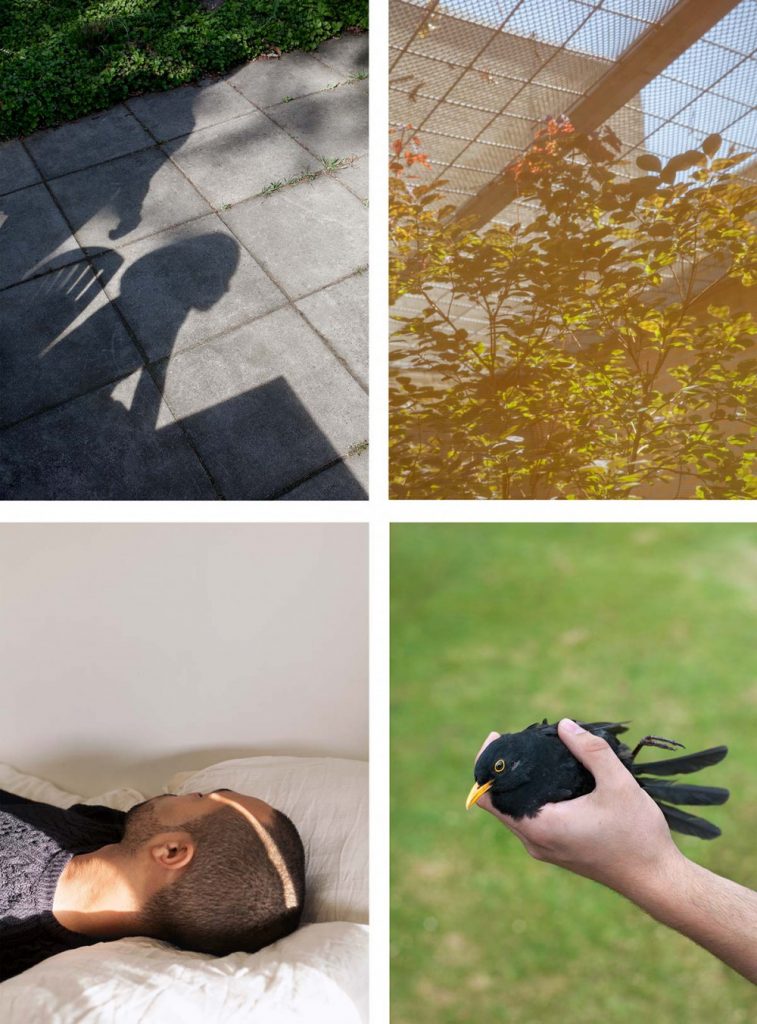
The photographer’s most eye-catching project is probably ‘Family Stranger’, which was published in 2020 in a photo book of the same name. In it, she puts the lens on relatives of detainees, who often feel judged by society. In a combination of images and quotes, she captures an underexposed narrative: how does your life change when a family member goes to prison? What does it mean to be an indirect victim of their actions? Family members will sometimes find themselves in financial trouble or are judged by those around them. A strange situation arises in which the prisoner ends up in a kind of time capsule where time seems to stands still, while the lives of their loved ones continue as usual. The series shows a glimpse of the interior of the Penitentiary Institution Vught, in combination with unrecognisable family members. Van Bon works in metaphors and symbols and depicts, among other things, shadows of bars, an inner courtyard, a clock or toys. Van Bon focuses on the (temporary) loss, the shame and vulnerability of these families, as well as the taboo that seems to overshadow everything. But at the same time, she also emphasises their humanity, strength, flexibility and perseverance. The photo book ‘Family Stranger’ was shortlisted for the Aperture First Book Award and The Author Book Award during the photography festival Les Rencontres d’Arles, among others. For a new series, the photographer focuses on homeless young people. What all of these diverse groups have in common is that they contain extremely lonely people, groups that are to some extent isolated from society. Van Bon looks at their lives and considers themes like power, behaviour and identity.
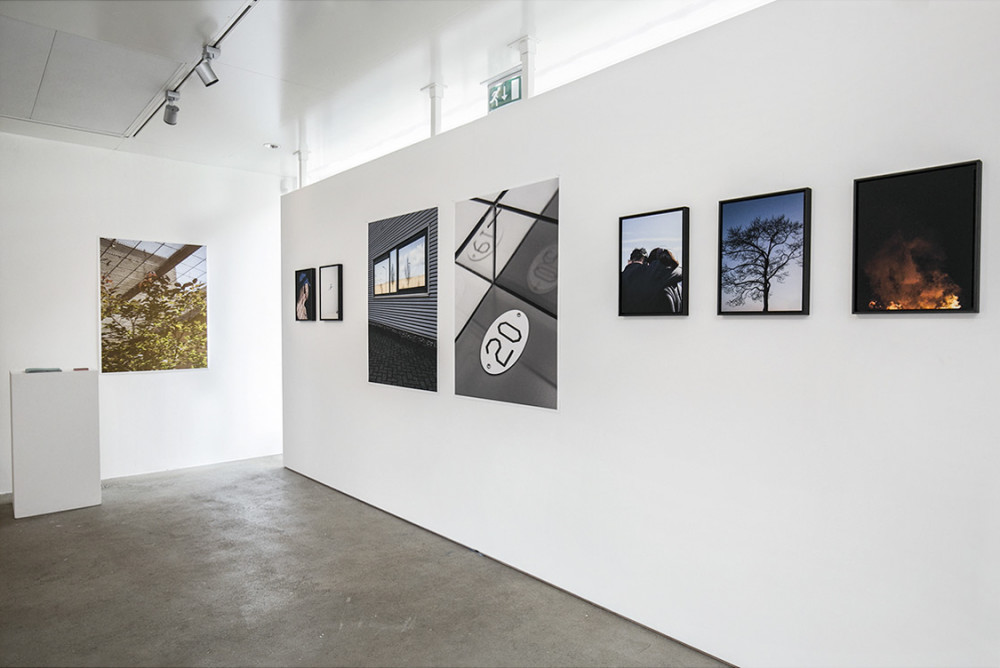
During Art Rotterdam, the work of Wiosna van Bon will be on show in the Prospects exhibition of the Mondriaan Fund. For the 10th time in a row, the Mondriaan Fund presents the work of 88 emerging artists here. In 2020, all of these artists received a financial contribution from the Mondriaan Fund to make a start in their career.
Tijdens Art Rotterdam treft u het werk van honderden kunstenaars van over de hele wereld. In deze reeks lichten we een aantal kunstenaars uit die bijzonder werk tonen tijdens de beurs.

De Pools-Nederlandse fotograaf Wiosna van Bon was op jonge leeftijd al buitengewoon geïnteresseerd in hoe andere mensen leven. Toen ze zes jaar oud was liep ze regelmatig alleen naar school, omdat haar moeder in de zorg werkte en haar vader meestal meerdere banen tegelijkertijd had. Ze ging dan een kwartiertje eerder de deur uit en belde vervolgens aan bij willekeurige huizen onderweg, met de vraag of ze even binnen mocht komen. Na een paar maanden belden deze verbaasde buren toch eens aan bij het huis van de zesjarige; ze vonden het heel gezellig allemaal, maar misschien niet om kwart voor acht ’s ochtends. Het is veelzeggend voor de nieuwsgierigheid van de fotograaf, een nieuwsgierigheid die in sterke mate gereflecteerd wordt in haar werk. In dezelfde periode kreeg ze ook haar eerste analoge camera, gestimuleerd door haar moeder, die een creatieve achtergrond had en een studie had afgerond aan de universiteit in Polen. Van Bons vader overleed op jonge leeftijd, toen de fotograaf twaalf jaar oud was. Het is dan misschien ook niet vreemd dat ze zo’n diepgewortelde interesse heeft voor de manieren waarop verschillende familie-units functioneren.
Van Bon studeerde documentaire fotografie aan de Koninklijke Academie van Beeldende Kunsten in Den Haag, maar bleef altijd geïnteresseerd in psychologie. Ze leest bijvoorbeeld graag boeken van de Britse neuroloog Oliver Sacks, die in zijn werken een inkijkje biedt in de menselijke geest. Van Bon doet eigenlijk hetzelfde: ze zoekt een bijzondere sociale groep op en probeert die vervolgens te duiden, écht te begrijpen. Als ze met haar moeder meeging naar de zorginstelling waar zij werkte dan was de fotograaf gefascineerd door subtiele verschillen, zo was er in oudere tehuizen vaak veel meer ruimte voor de individualiteit van de inwoners.

Later fotografeerde ze mensen die stellen overgevoelig te zijn voor elektromagnetische straling, de voorgangers van de mensen die nu stellig overtuigd zijn van de mogelijke schade van 5G. Altijd vanuit een oprechte interesse voor hun belevingswereld en gecombineerd met uitvoerig onderzoek. Ze gaat daarvoor ook in gesprek met verschillende experts, organisaties en de mensen in kwestie. Vaak is ze maanden bezig met een project, waardoor ze echt een goed beeld krijgt van het leven van deze personen. Van Bon merkte dat ze soms geconfronteerd werd met haar eigen bewuste of onbewuste vooroordelen en ze hoopt haar kijkers dan ook te stimuleren om eens met een andere blik naar deze groepen mensen te kijken.
Het meest in het oog springende project van de fotograaf is waarschijnlijk ‘Family Stranger’, dat in 2020 werd gepubliceerd in een gelijknamig fotoboek. Daarin legt ze de lens op familieleden van gedetineerden, die zich vaak veroordeeld voelen door de maatschappij. In een combinatie van beelden en quotes legt ze een onderbelicht narratief vast: hoe verandert je leven wanneer een familielid de gevangenis in gaat? Wat betekent het om een indirect slachtoffer te worden van hun daden? Familieleden komen soms in geldproblemen of worden veroordeeld door hun omgeving. Er ontstaat een vreemde situatie waarbij de gevangene in een soort tijdscapsule terechtkomt waarin alles stilstaat, terwijl het leven van hun geliefden gewoon doorgaat. De serie toont een glimp van het interieur van de Penitentiaire Inrichting Vught in combinatie met onherkenbare familieleden. Ze werkt in metaforen en symbolen en verbeeldt onder meer schaduwen van tralies, een luchtplaats, een klok of speelgoed. Van Bon focust daarbij op het gemis, de schaamte en de kwetsbaarheid van deze gezinnen, en het taboe dat alles lijkt te overschaduwen. Maar ze benadrukt tegelijkertijd ook hun menselijkheid, kracht, buigzaamheid en doorzettingsvermogen. Het fotoboek ‘Family Stranger’ stond onder meer op de shortlist voor de Aperture First Book Award en The Author Book Award tijdens het fotografiefestival Les Rencontres d’Arles. Voor een nieuwe reeks richt de fotograaf zich op dak- en thuisloze jongeren. Wat deze uiteenlopende groepen gemeen hebben is dat het vaak buitengewoon eenzame mensen zijn, groepen die tot op zekere hoogte zijn afgezonderd van de maatschappij. Van Bon kijkt daarbij in het bijzonder naar macht en onmacht, gedrag en identiteit.

Tijdens Art Rotterdam is het werk van Wiosna van Bon te zien in de Prospects tentoonstelling van het Mondriaan Fonds. Voor de 10e keer op rij presenteert het Mondriaan Fonds hier het werk van 88 startende kunstenaars. Alle kunstenaars ontvingen in 2020 een financiële bijdrage van het Mondriaan Fonds om een start te maken met hun carrière.
Voor een overzicht van alle kunstenaars: www.mondriaanfonds.nl/prospects.
Tijdens Art Rotterdam tref je het werk van honderden kunstenaars van over de hele wereld. In deze reeks lichten we een aantal kunstenaars uit die bijzonder werk tonen tijdens de beurs.
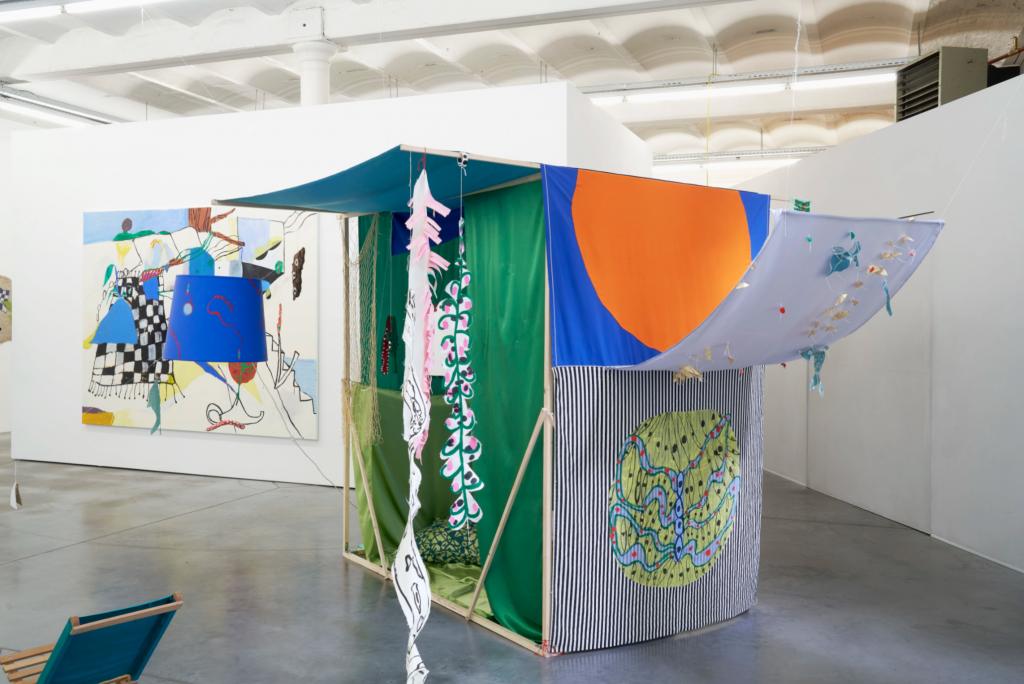
De Vlaamse kunstenaar Fleur De Roeck was als kind al een fantasievolle schilder en tekenaar, Ze bracht haar tienerjaren door in Visan, een klein dorpje in de regio Provence-Alpes-Côte d’Azur dat destijds zo’n 1600 inwoners telde. Op haar achttiende stelde De Roeck haar schilderijen voor het eerst tentoon in Visan. Ze besloot Grafisch Design (Ontwerp) te gaan studeren aan de Koninklijke Academie voor Schone Kunsten in Antwerpen, hoewel ze tegenwoordig vooral terugkijkt op deze periode als een tijd waarin ze veel creatieve beperkingen ervaarde.
Het werk van De Roeck is te herkennen aan haar heldere, harmonieuze en dynamische kleurgebruik, gecombineerd met de kleur wit. Ze schildert en tekent geabstraheerde vormen die tegelijkertijd vaak een bepaalde herkenning oproepen. Op papier werkt de kunstenaar graag met Chinese inkt, omdat het haar dwingt om snelle beslissingen te nemen; ze heeft voor haar gevoel dan slechts één kans.
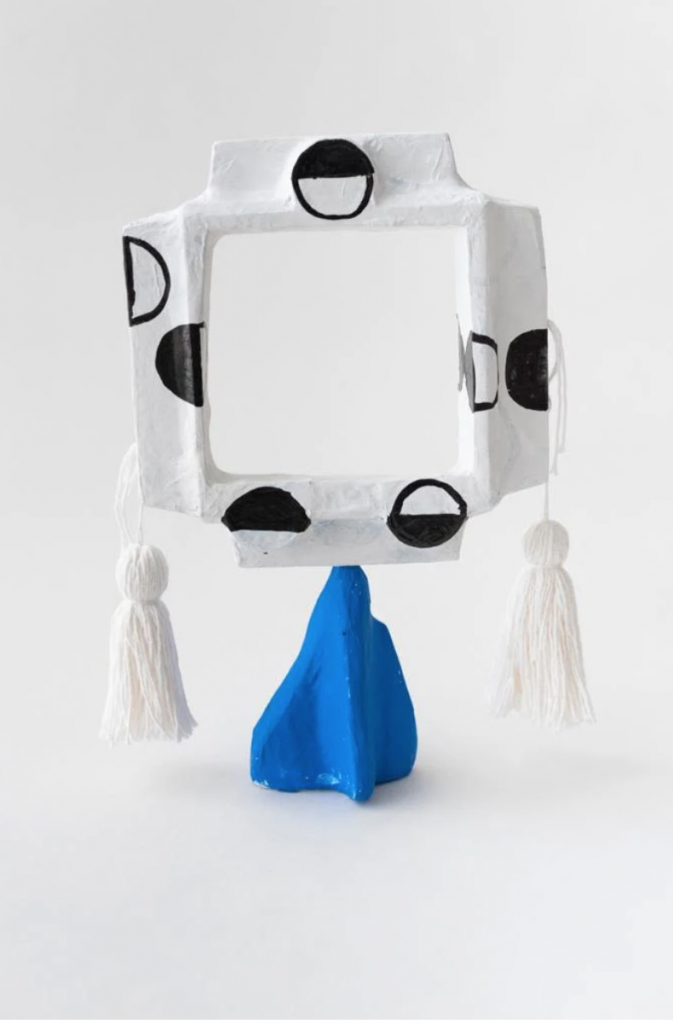
De Roeck werkt daarbij in een veelheid aan formaten: van metershoge schilderijen en kleine, ingetogen schetsen en collages tot sculpturen uit hout, steen, stukken schors, papier-maché of beton. Soms maakt ze installaties waarin verschillende sculpturen, tekeningen en schilderijen zijn opgenomen. De kunstenaar ervaart vooral een diepgewortelde drang om dingen te maken, maar werkt daarbij altijd intuïtief. Haar praktijk biedt ook ruimte voor toeval, dromen, het mystieke en het onderbewuste en in geïnspireerd door elementen uit de natuur en design.
Een andere belangrijke inspiratiebron is haar oma Monique Vermeire, die net als De Roeck al haar hele leven schildert en ook veel werken verkocht heeft. De Roeck: “Nadat ik in de foto’s van mijn grootouders was gedoken, merkte ik dat mijn grootmoeder meer dan 60 jaar op bijna elke foto, in elk land, aan het schilderen of tekenen was.” Tot en met 17 april is in galerie TATJANA PIETERS in Gent een groepstentoonstelling te zien die werd gecureerd door De Roeck en fungeert als een eerbetoon aan haar 83-jarige ‘bomma’, die nog steeds iedere dag schildert in haar atelier. Het werk van Vermeire wordt daarin gecombineerd met het werk van haar kleindochter en een vijftal andere jonge kunstenaars.
Tijdens Art Rotterdam is het werk van Fleur De Roeck te zien in de New Art Section, eveneens gepresenteerd door TATJANA PIETERS.
During Art Rotterdam, you can spot the work of hundreds of artists from all over the world. In this series we highlight a number of artists who will show remarkable work during the fair.
Otobong Nkanga wrote a poem for her last solo exhibition in Bregenz, Austria. She performed it as a clay tablet. In keeping with an exhibition that revolves, among other things, on the different manifestations of water and earth.
The reason Nkanga wrote a poem is that she doesn’t like writing texts explaining her work. “I don’t normally like writing texts about my work, but if you’d want me to explain my work then read a poem. What poetry does is to activate the emotions. To amplify the thoughts and to go beyond the language of politics and economy.”
Beyond the political and economic
Bypassing the political and economic language in order to address the viewer directly on an emotional level, that is in a nutshell what the multidisciplinary artist Otobong Nkanga (1974) aims at with her work. Through her wall hangings, drawings, video works, photography, installations and performances, she discusses almost every major topic of our time: think of the climate crisis, the extraction and distribution of raw materials and sustainability.
In doing so, she has an eye for both the places where the raw materials end up and the places that usually remain out of the picture: the parts of the world where raw materials are mined. The latter areas often coincide with former colonies, such as in West Africa, where the consequences of the colonial and current Western presence continue to affect societies to this day. “It’s important for me to work on the correlation of worlds that are visible to worlds that are not. My works move between the non-visible and the nontangible to places that are concrete, places that awaken the senses: touch, smell, sight, sound.”
Nkanga is considered one of the most important contemporary artists of African origin. Born in Kano, Nigeria, she grew up in France and lives and works in Antwerp. Her work was shown at the Venice Biennale (2019), documenta 14 (2017), and 14 Rooms in Basel (2014). In recent years, Nkanga has exhibited at the Gropius Bau in Berlin, Tate St Ives, Castello di Rivoli, and Kunsthaus Bregenz, among others.
Illustrative of her thinking is the answer she gave when asked what motivation means to her: “When you have a storm in Mozambique, that cleanses up a whole place. While some places are very turbulent, in others places it’s very calm, so you’re able to work and continue your life for 60 years. So to be able to be motivated is not entirely up to you. It is in the kind of environment and support that you get from people, places, landscape, weather, temperatures. All that makes it possible. I’ve been fortunate to have been in places where all those things align.” Where in the Western narrative everything begins and ends with the individual, Nkanga starts by taking into account environmental factors.
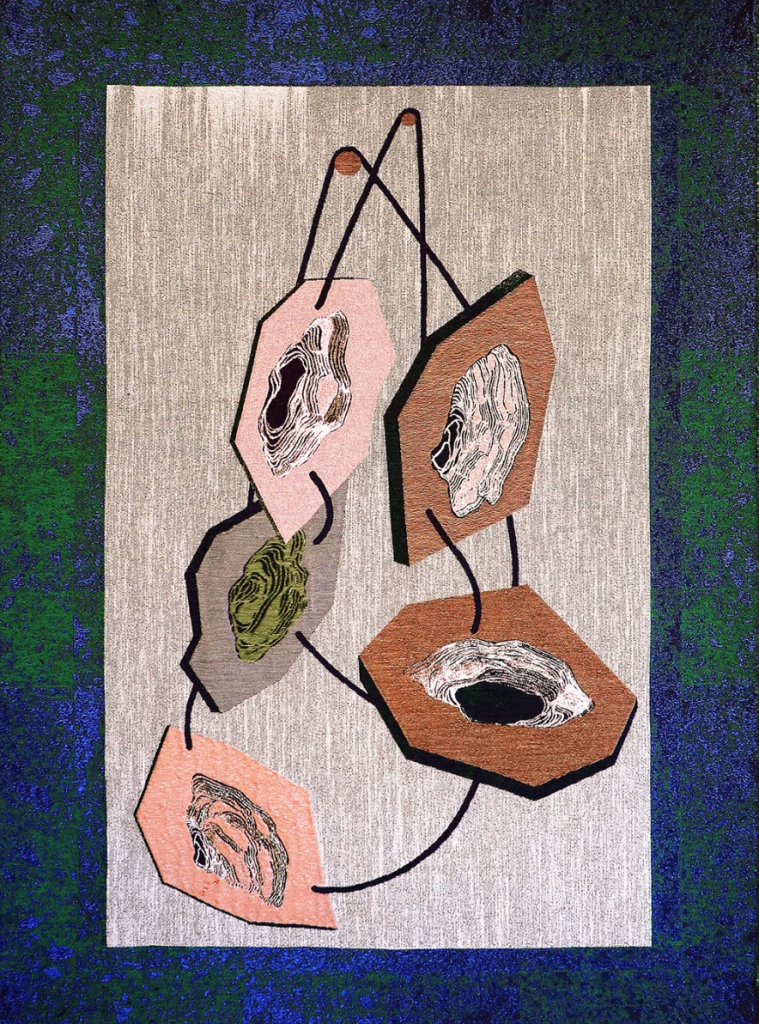
The Weight of Scars
In her work she shows the global interaction between these variables. You could therefore regard Nkanga’s work as a poetic system analysis – one with a glimmer of hope. A recurring theme in her work is the extraction of raw materials – such as mica, a raw material that is used in make-up, among other things – and its worldwide implications.
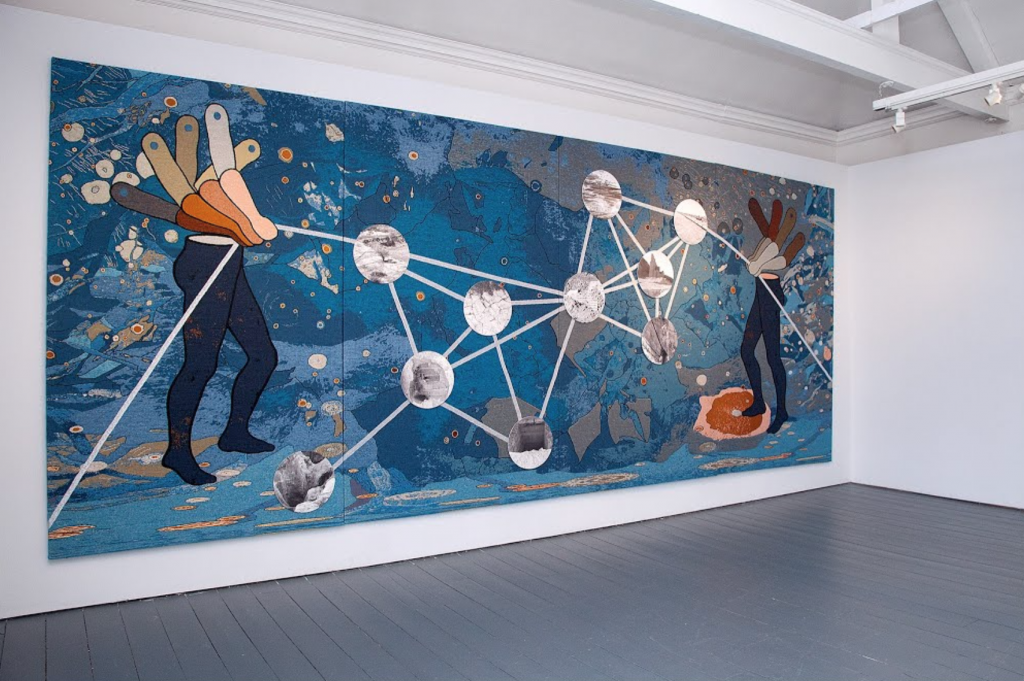
Nkanga made the tapestry The Weight of Scars in 2015 after a visit to the Tsumeb mines in Namibia. On the installation you see two headless figures on either side who seem to have a sticks in their hands connected to 9 photos of mine shafts, holes, pipelines and explosions.
Nkanga found it difficult to look at the gaps in the landscape. As she walked into the old mine shafts, she thought of the scars and trauma people must have suffered here and the wounds in the landscape the mine caused. “While I was there, I realized that Tsumeb looked like this due to the use of explosives by the German colonial overlords. By doing so they have not only accelerated the method of mining, but also permanently changed the fabric of society.”
According to Nkanga, our insatiable appetite for consumer goods such as telephones, computers and make-up has made us addicted to raw materials such as copper, gold and mica. Yet, if we realize that we are all connected through these raw materials, we can interact with our landscape and each other in a different way, according to Nkanga.

Unearthed
For Unearthed, the solo exhibition at Kunsthaus Bregenz last winter, Nkanga was given access to all 4 floors of the museum. She installed a tapestry on each floor of the museum showing one of the ways earth and water are intertwined. From the depths of the ocean, to the seasons, and the scorching heat of the sunlight in the desert, where plants grow despite the heat. As if nature always finds a way to carry on.
In addition, she had a tree stump installed on every floor between the floor and the ceiling. The slowly drying tree stump represents the gradual change. You cannot see the gradual but certain death of the tree, but there are signs from which the visitor can infer this. Call it an incentive to critically reflect on how we deal with our planet.
On the third floor, cables run from the dying stump to three glass capsules containing cuttings. In an interview, Nkanga says that tree was already nominated to be cut down, because it overshadowed other trees, preventing them from growing. Sometimes leaving a hole isn’t bad. Still, one Nkanga decided to plant new trees elsewhere so as not to burden the local ecosystem too much.
To celebrate the Kunsthaus’s 25th anniversary, the museum has rented the 16th-century Scuola di San Pasquale during the Venice Biennale to draw attention to its forward-thinking exhibition program. In addition to a presentation of work by Anna Boghiguian, the Kunsthaus shows work by Otobong Nkanga.
Tied to the other side
At the upcoming edition of Art Rotterdam, the Lumen Travo gallery will show a new tapestry that has never been on display before. Tied to the other side measures 3.5 x 6.5 meters and was woven according to Nkanga’s specifications and drawings by the Tilburg Textile Lab on the recently purchased Dornier loom. This is a state-of-the-art loom that can handle complex patterns and structures and can weave rugs up to three and a half meters wide.

Tied to the other Side is about how we deal with the elements of earth and water. Our appetite for raw materials has taken on such forms that drilling is also taking place in deeper places in the sea. On the blue tapestry we see this craving take on the shape of a scaffold-like structure with arms, plants and a container attached to it, and in the shape of a needle that pricks a human body. The needle represents the machinery and system that exploits people, land and sea. On the left you see a number of staffs. One of those staffs emits bright rays that indicate as yet unknown possibilities. Rays projecting into the future.
Tijdens Art Rotterdam treft u het werk van honderden kunstenaars van over de hele wereld. In deze reeks lichten we een aantal kunstenaars uit die bijzonder werk tonen tijdens de beurs.
Als zaaltekst voor haar laatste solotentoonstelling in het Oostenrijkse Bregenz schreef Otobong Nkanga een gedicht. Ze voerde het uit als kleitablet. Passend bij een tentoonstelling die onder meer draait om de verschillende verschijningsvormen van water en aarde.
De reden dat Nkanga een gedicht schreef, is dat ze niet houdt van teksten waarin ze haar werk toelicht. “Ik houd er niet echt van om over mijn werk te schrijven, maar als je wilt dat ik mijn werk toelicht: lees dan het gedicht. Poëzie activeert de emoties, het verruimt je gedachten omdat het voorbijgaat aan het politiek en economisch taalgebruik.”
Voorbij het politieke en economische
De politieke en economische taal omzeilen om de kijker direct op emotioneel niveau aan te spreken, dat is in een notendop wat de multidisciplinaire kunstenares Otobong Nkanga (1974) met haar werk beoogt. Aan de hand van wandkleden, tekeningen, videowerken, fotografie, installaties en performances behandelt ze vrijwel alle grote onderwerpen van deze tijd: denk aan de klimaatcrisis, het delven en verdelen van grondstoffen en duurzaamheid.
Daarbij heeft ze zowel oog voor de plekken waar de grondstoffen terecht komen als voor de plekken die doorgans buiten beeld blijven: de delen van de wereld waar grondstoffen gedolven worden. Die laatste gebieden vallen vaak samen met voormalige koloniën, zoals in West-Afrika, waar de gevolgen van de koloniale en huidige Westerse aanwezigheid tot op de dag van vandaag doorwerken in de samenlevingen. “Ik vind het belangrijk om in mijn werk de verwevenheid te laten zien tussen werelden die zichtbaar zijn en plekken die dat niet zijn. Mijn werk beweegt zich tussen het onzichtbare en niet-tastbare en concrete plekken. Plekken die de zintuigen doen ontwaken door geur, tasten, beeld en geluid”.
Nkanga geldt als een van de belangrijkste hedendaagse kunstenaars van Afrikaanse origine. Ze werd geboren in Kano, Nigeria, groeide op in Frankrijk en woont en werkt in Antwerpen. Haar werk was te zien op de Biennale van Venetië (2019), documenta 14 (2017), en 14 Rooms in Basel (2014). De afgelopen jaren Nkanga exposeerde onder meer in de Gropius Bau in Berlijn, Tate St Ives, Castello di Rivoli, en Kunsthaus Bregenz.
Illustratief voor haar denkwijze is het antwoord dat ze gaf op de vraag wat motivatie voor haar betekent: “Als het stormt in Mozambique is de ravage compleet en legt dat het dagelijks leven lam en kan je niks doen. Sommige plekken op aarde zijn zeer turbulent, andere plaatsen daarentegen zijn kalm. Daar kan je ongehinderd je leven leiden en werken. Dus motivatie is niet iets dat je geheel in de hand hebt. Het wordt onder meer bepaald door de omgeving en de steun die je krijgt van mensen, plekken, het landschap, het weer en de temperatuur. Al die zaken spelen een rol. Ik het geluk gehad dat ik op plekken woonde waar deze factoren gunstig waren.” Waar in het Westers narratief alles begint en eindigt met het individu, begint het verhaal bij Nkanga bij omgevingsfactoren.

The Weight of Scars
In haar werk laat ze de wereldwijde interactie tussen deze variabelen zien. Je zou Nkanga’s werk dan ook kunnen beschouwen als een poëtische systeemanalyse, maar wel een met sprankje hoop. Een van de terugkerende thema’s in haar werk is de winning van grondstoffen – zoals mica, een grondstof die onder meer wordt verwerkt in make-up – en de wereldwijde implicaties daarvan.

Het wandkleed The Weight of Scars maakte Nkanga in 2015 naar aanleiding van een bezoek aan de Tsumeb mijnen in Namibië. Op de installatie zie je aan weerszijden twee figuren zonder hoofd die een stok in hun handen lijken te hebben en die verbonden zijn met 9 foto’s van mijnschachten, gaten, pijpleidingen en explosies. Nkanga vond het moeilijk om naar de gaten in het lanschap te kijken.
Toen ze de oude mijnschachten in liep, dacht ze aan de littekens en trauma’s die mensen hier opgelopen moeten hebben en aan de wonden in het landschap die de mijn veroorzaakte. “Toen ik daar was besefte ik dat Tsumeb er zo uitzag door het gebruik van explosieven door de Duitse koloniale overheersers. Ze hebben niet alleen de manier van delven versneld, maar ook de structuur van de samenleving blijvend veranderd”.
Volgens Nkanga zijn we door onze onverzadigbare hang naar consumptiegoederen als telefoons, computers en make-up verslaafd geraakt aan grondstoffen als koper, goud en mica. Maar als het besef ontstaat dat we via deze grondstoffen allemaal met elkaar verbonden zijn, kunnen we volgens Nkanga op een andere manier omgaan met ons landschap en elkaar.

Unearthed
Voor Unearthed, de tentoonstelling in Kunsthaus Bregenz, kreeg Nkanga de beschikking over alle 4 verdiepingen van het museum. Op iedere verdieping van het museum installeerde ze een wandkleed waarop een van de manier aarde en water verweven zijn te zien is. Van de diepten van de oceaan, tot de seizoenen, en de verzengende hitte van het zonlicht in de woestijn, waar ondanks de hitte daar toch planten groeien. Alsof de natuur altijd een manier vindt om door te gaan.
Bovendien liet ze op iedere verdieping tussen de vloer en het plafond een boomstronk installeren. De langzaam uitdrogende, afstervende boomstronk staat voor de geleidelijke verandering. Het geleidelijk afsterven van de boom kan je niet zien, maar er zijn tekenen waaruit de bezoeker dit kan op maken. Een aansporing om een kritisch te reflecteren op onze omgang met onze planeet.
Op de derde verdieping lopen er kabels van de afstervende stronk naar drie glazen capsules met daarin stekjes. In een interview vertelt ze dat boom al op de nominatie stond om gekapt te worden, omdat hij andere bomen overschaduwde waardoor ze niet konden groeien. Soms is het achterlaten van een gat niet slecht. Toch besloot een Nkanga om op een andere plek nieuwe bomen te planten, zodat ze het lokale ecosysteem niet te veel zou belasten.
Om het 25-jarig bestaan van het Kunsthaus te vieren, heeft het museum deze zomer de 16e-eeuwse Scuola di San Pasquale gehuurd om aandacht te vragen voor het vooruitstrevende tentoonstellingsprogramma. Naast een presentatie met werk van Anna Boghiguian,toont het Kunsthaus werk van Otobong Nkanga.
Tied to the other side
Op de komende editie van Art Rotterdam toont galerie Lumen Travo een nieuw wandkleed dat nog niet eerder te zien is geweest. Tied to the other side meet 3,5 x 6,5 meter en werd op basis van Nkanga’s tekeningen geweven door het Tilburgse Textiellab op het recent aangekochte Dornier weefgetouw. Dat is een state-of-the-art weefgetouw dat complexe patronen en structuren aankan en kleden kan weven tot maar liefst drieënhalve meter breed.

Ook Tied to the other Side gaat over onze omgang met de elementen aarde en water. Onze hang naar grondstoffen heeft zulke vormen aangenomen dat er ook op diepere plekken in zee wordt geboord. Die hang zien we op het blauwe wandkleed terug in de vorm van een stellage met daaraan armen, planten en een container, en in de vorm van een naald die in een menselijk lichaam prikt. De naald staat voor de machinerie en het systeem dat mensen, land en zee exploiteert. Links zie je een aantal staven. Van een van die staven komen heldere stralen die wijzen op nog onbekende mogelijkheden. Stralen richting de toekomst.
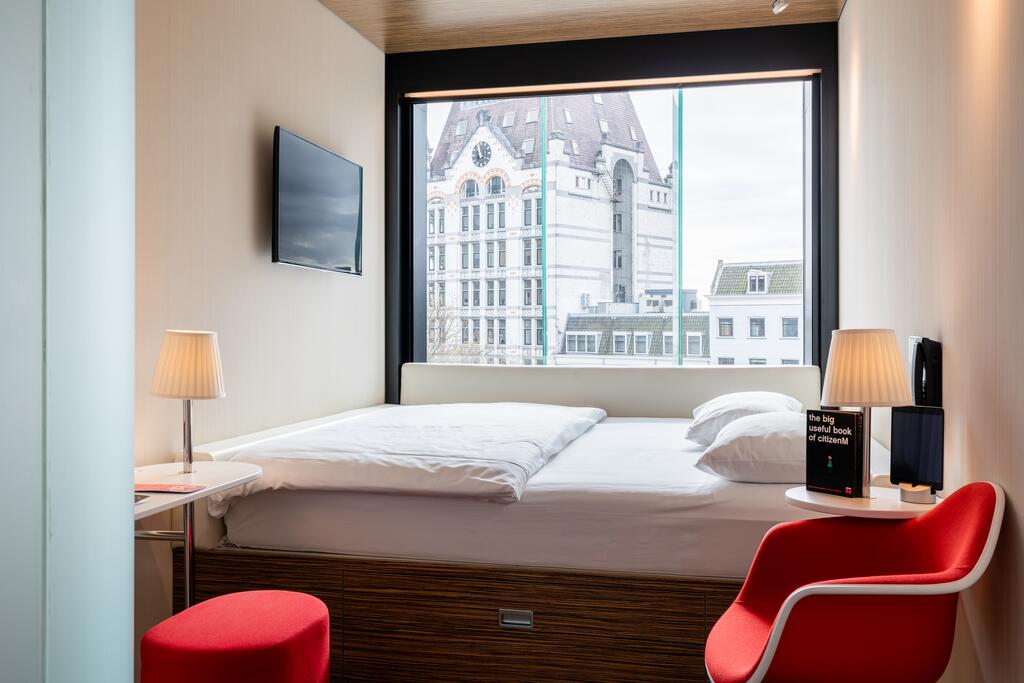
citizenM Rotterdam:
www.citizenM.com/ART2022
Speciale prijs: korting van 11% per kamer per nacht / kingsize bed, inclusief ontbijt voor 2 personen, btw, exclusief toeristenbelasting.
Supernova Hotel:
www.supernovahotel.nl
Gebruik ‘ART010’ als promotiecode voor 10% korting
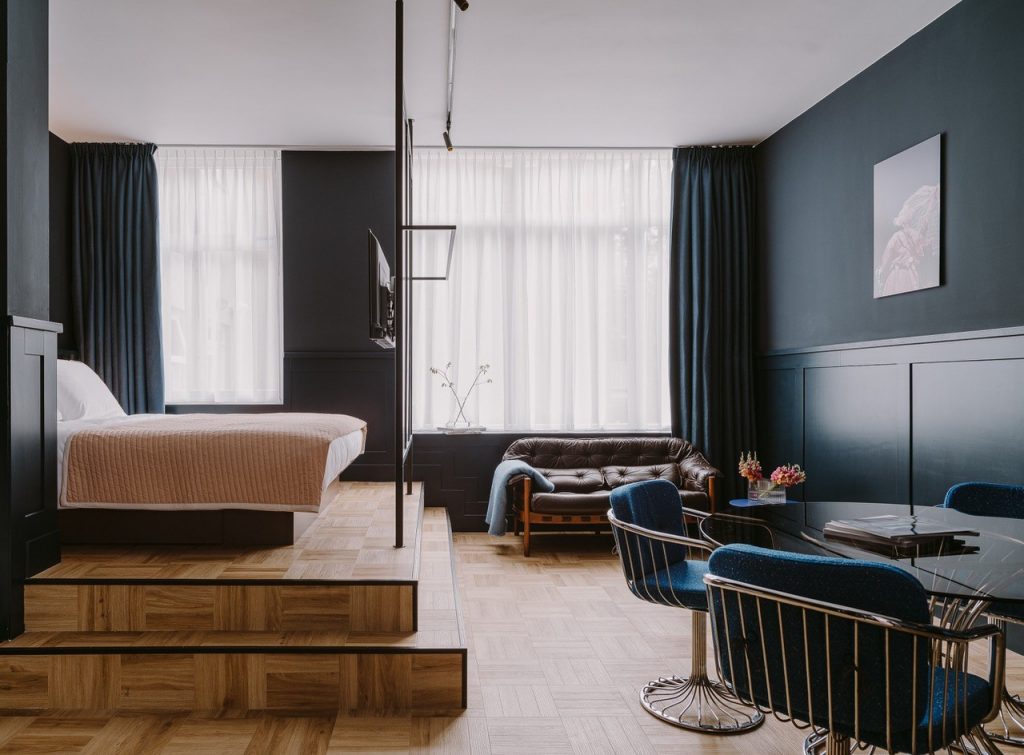

citizenM Rotterdam:
www.citizenM.com/ART2022
Special price: discount of 11% per room per night / king-size bed, including breakfast for 2 persons, VAT, excluding city tax.
Supernova Hotel:
www.supernovahotel.nl
Enter ‘ART010’ as promo code for 10% discount

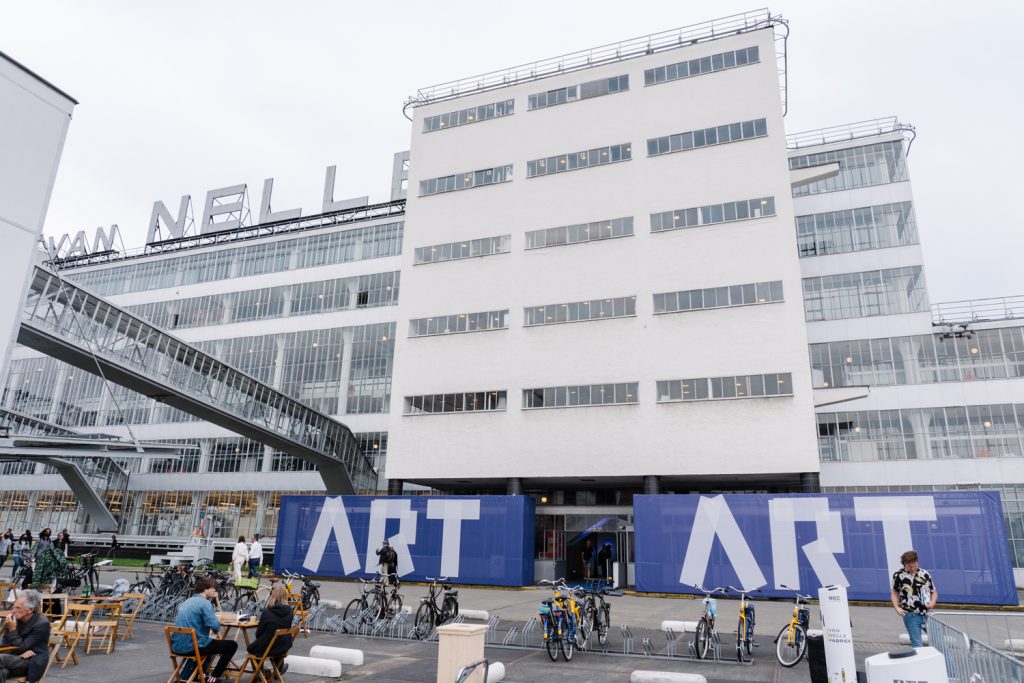
Sculpture Park Sculpture Park will feature ten to twenty primarily large-scale works of art related to nature or the urban environment. The presentation will be located in the Tabaksfabriek (Tobacco Factory), one of the industrial and historic sections of the Van Nelle Fabriek. The architectural details are being developed by spatial design studio Tom Postma Design (known not only for their work at Art Rotterdam, but also Art Basel, Frieze Masters and TEFAF). Part of the exhibition space is dedicated to artists who live in Rotterdam or are graduates of a Rotterdam art academy, since after all, Sculpture Park revolves around the connection with the city of Rotterdam. Rotterdam boasts a unique international collection of over 50 major works of art. These sculptures, placed at important locations throughout the city, form part of the public programme for Rotterdam Art Week. The administrator of this collection, Sculpture International, is also involved in the content and promotion of Sculpture Park at the Van Nelle Fabriek. As part of this involvement, a representative of Sculpture International, together with a representative of Tom Postma Design and a Rotterdam curator/museum director, are all on the selection committee. Stichting Doom en Daad is also an important initiator of Sculpture Park. This foundation, which was established in 2017, is a philanthropic fund that invests in projects that help make Rotterdam attractive and appealing to residents and visitors alike.
Sculpture Park selection committee
The works of art will be chosen by a selection committee consisting of Ove Lucas (director CBK Rotterdam and director Sculpture International Rotterdam), Saskia van Kampen (curator Boijmans Van Beuningen) and Tom Postma (creative director Tom Postma Design).
New Art Section
With the always surprising New Art Section, Art Rotterdam offers a unique presentation of up-and-coming artists. This year, the focus is enhanced. To endorse the philosophy behind Art Rotterdam – discovering new art and encouraging young talent – a central placement has been chosen. Visitors to this 24th edition cannot miss it, as the New Art Section is located directly next to the entrance and its innovative presentations are hard to ignore. Two restaurants are located adjacent to the presentation that are accessible from the entrance area.
Michiel Simons of galerie M.Simons, comments, “As a young gallery owner, I am extremely proud to once again have the opportunity to take part in the New Art Section at the most prominent contemporary art event in the Netherlands. The bold character and exceptional quality of Art Rotterdam make the event a platform where, together with my artists, I can always go the extra mile in creating a presentation that is as unexpected and surprising as possible. I look forward to welcoming visitors in February with a solo presentation of work by Hadrien Gerenton and to get inspired by my fellow gallery owners.”